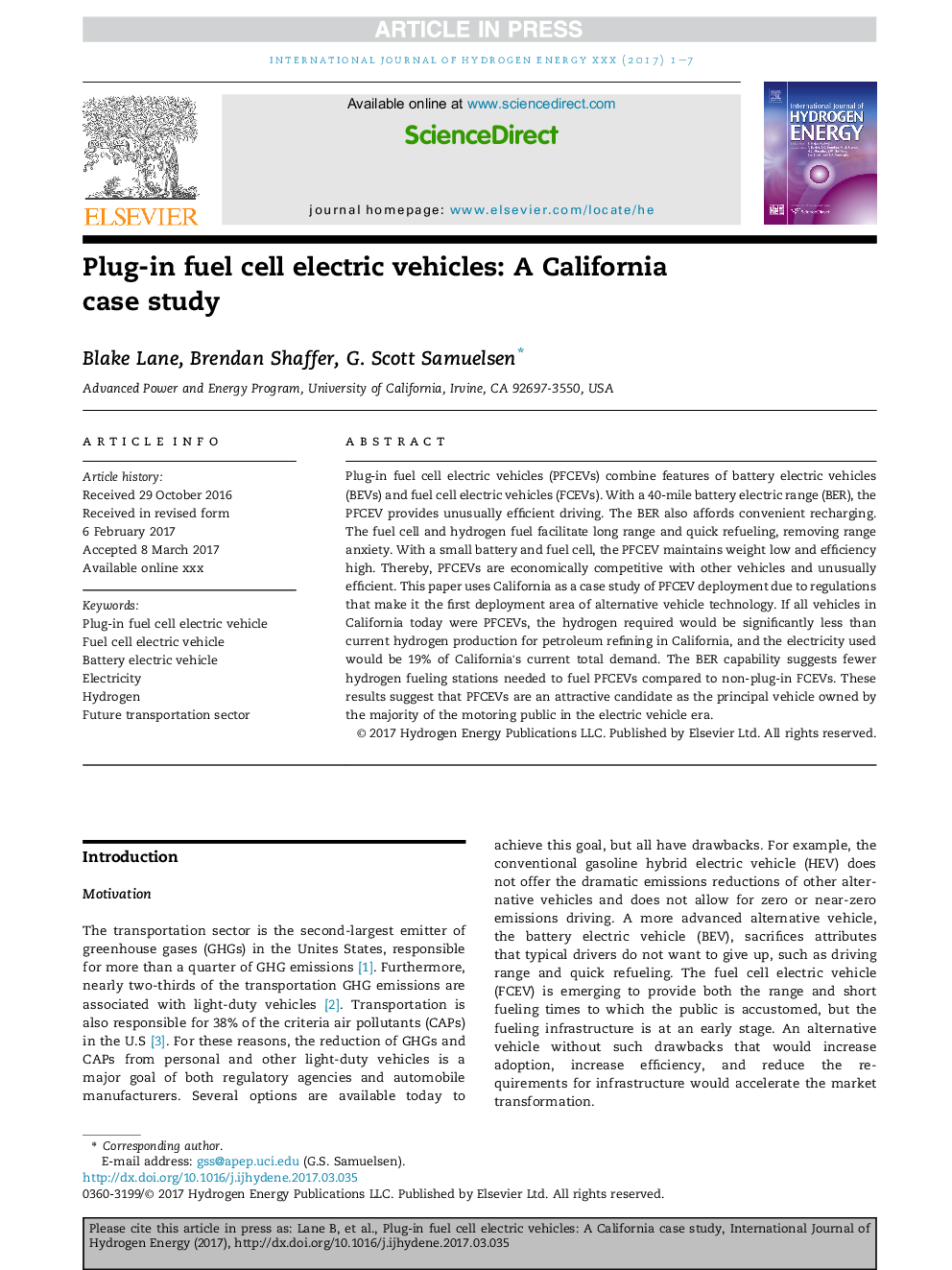| Article ID | Journal | Published Year | Pages | File Type |
|---|---|---|---|---|
| 5146957 | International Journal of Hydrogen Energy | 2017 | 7 Pages |
Abstract
Plug-in fuel cell electric vehicles (PFCEVs) combine features of battery electric vehicles (BEVs) and fuel cell electric vehicles (FCEVs). With a 40-mile battery electric range (BER), the PFCEV provides unusually efficient driving. The BER also affords convenient recharging. The fuel cell and hydrogen fuel facilitate long range and quick refueling, removing range anxiety. With a small battery and fuel cell, the PFCEV maintains weight low and efficiency high. Thereby, PFCEVs are economically competitive with other vehicles and unusually efficient. This paper uses California as a case study of PFCEV deployment due to regulations that make it the first deployment area of alternative vehicle technology. If all vehicles in California today were PFCEVs, the hydrogen required would be significantly less than current hydrogen production for petroleum refining in California, and the electricity used would be 19% of California's current total demand. The BER capability suggests fewer hydrogen fueling stations needed to fuel PFCEVs compared to non-plug-in FCEVs. These results suggest that PFCEVs are an attractive candidate as the principal vehicle owned by the majority of the motoring public in the electric vehicle era.
Related Topics
Physical Sciences and Engineering
Chemistry
Electrochemistry
Authors
Blake Lane, Brendan Shaffer, G. Scott Samuelsen,
